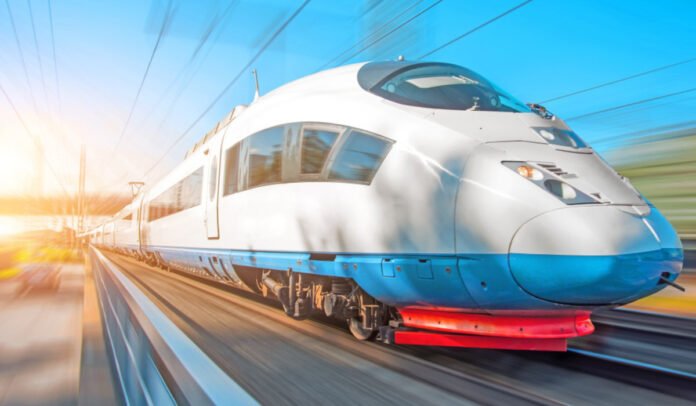India’s Bullet Train Vision Revolutionising Connectivity and Growth
India is on the verge of a transport revolution. With Prime Minister Narendra Modi’s recent statement that the first bullet train will soon be operational, the country’s rail system is set for a transformative leap. The much-anticipated Mumbai-Ahmedabad High-Speed Rail (MAHSR) project, which kicked off in 2017 during a visit from Japan’s former Prime Minister Shinzo Abe, marks the beginning of a new era in Indian railway infrastructure. The project, aimed to be operational by 2027, is a critical part of Modi’s larger vision of modernising Indian Railways and boosting the country’s infrastructure to drive economic growth.
The MAHSR will initially operate in Gujarat, with further extensions into Maharashtra, marking the first step towards a comprehensive high-speed rail network in the country. While the MAHSR project is largely being supported by Japanese technology and expertise, India is also forging ahead with the development of indigenous bullet train technology. This includes the Vande Bharat trains, which are set to evolve from semi-high-speed to full high-speed status, with the help of India’s own Integral Coach Factory and BEML. The goal is to achieve speeds of 280 km/h, making it one of the fastest trains in the country.
This new generation of Vande Bharat trains recently achieved a significant milestone with its sleeper version hitting 180 km/h during trials. Over the next two years, two prototype trains will be developed and tested on the Mumbai-Ahmedabad corridor, laying the foundation for the first indigenous bullet train. As these trains develop, the Indian Railways is also drawing inspiration from Japan’s Shinkansen, which first ran at 210 km/h in 1964 and later reached speeds of 320 km/h. However, the financial aspect of these ambitious plans presents a significant challenge. The price tag for each car of India’s indigenous bullet train is Rs 28 crore, a fraction of the cost of Japanese rolling stock. While this makes the indigenous trains much more affordable, the funding required to build an expansive network, especially the “diamond quadrilateral” of high-speed rail connecting major cities, will need innovative financing models. Japan’s International Cooperation Agency (JICA) has provided soft loans for the MAHSR project, but India will need to explore alternative sources of capital, such as private-sector investment and global patient capital, to make this vision a reality.
The idea of bullet trains is not just a matter of high-speed transportation; it also promises to integrate India’s growing cities more closely. Researchers, such as Kyle Chan from Princeton University, point out that regions connected by high-speed rail become one cohesive commuting zone. Cities like Hyderabad, Bengaluru, and Chennai could form a tech corridor connected by bullet trains, creating more opportunities for businesses and workers alike. Economically, cities with access to high-speed rail tend to benefit more due to improved connectivity, which in turn drives growth, productivity, and job creation. In addition to the economic benefits, bullet trains will contribute positively to environmental goals. Unlike diesel-powered cars or planes, bullet trains are electrically powered, reducing dependence on fossil fuels. As a result, they can significantly cut down on carbon emissions, aligning with India’s climate change mitigation goals and reducing its reliance on imported energy.
While the vision for a bullet train network in India is promising, there are concerns about its real-world impact. Many people in rural and semi-urban areas are wary that the focus on high-speed trains might neglect basic transport needs. There is also concern about the high cost of the project, which could place a strain on public finances. Nonetheless, officials remain confident that the long-term economic and environmental benefits of a well-integrated, high-speed rail system will outweigh these concerns. The bullet train project is a bold step towards modernising India’s infrastructure, and while challenges remain, it holds immense potential to reshape travel, connect cities, and stimulate economic growth across the nation. With international collaboration and domestic innovation, the dream of high-speed rail could soon become a reality, revolutionising the way India travels and conducts business.



